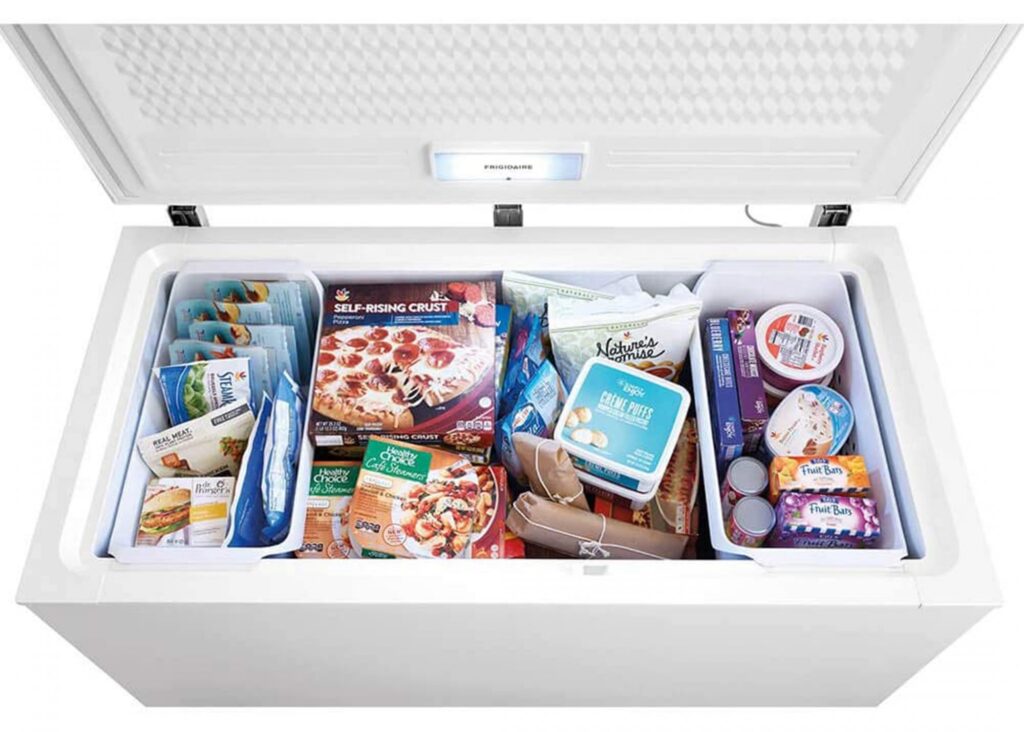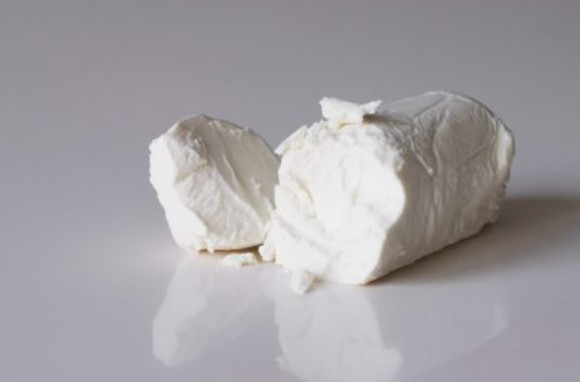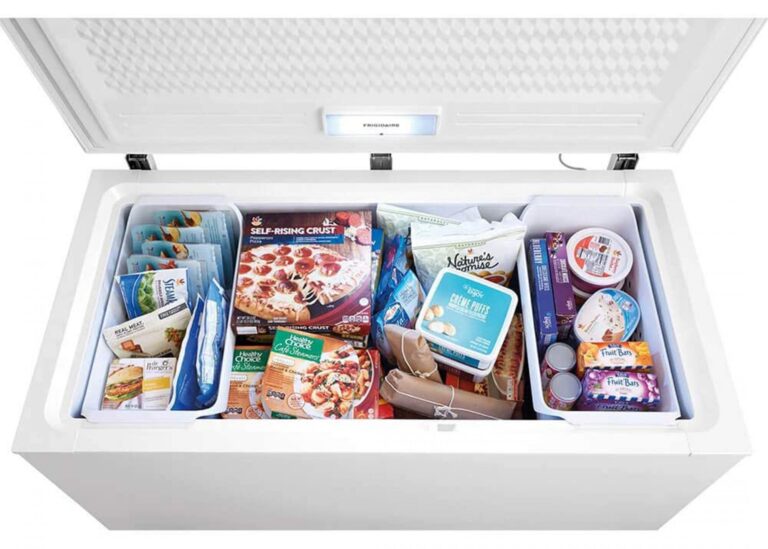Can A Chest Freezer To Be Hot On The Outside?
If you own a chest freezer, you’re probably wondering why it’s warm on the outside even though it’s cooler on the inside.
You might think that a freezer shouldn’t create heat on its sides, but that isn’t the case. Experts have been asked to figure out if this is a cause for worry.
The sides of chest freezers and other types of freezers should always feel warm to the touch because they pull heat out of the freezer compartment by using the compressor.
The warmth comes from the collected heat being dissipated to the back or sides of the freezer by the Condenser.
Don’t worry, your chest freezer’s sides will be warm the next time you check them.
If you’re not convinced, we’ll explain how you can keep your freezer cold even when it’s hot outside most of the time. Continue reading to find out how it happened.
Table of Contents
Is It Normal to Have a Deep Freezer That Gets Hot on the Outside?
The outer side of freezers is usually heating up. Based on science and industrial standards, that’s how it should be. Let’s learn how a freezer works so we understand why this is so.
A cooling pipe inside the freezer contains a special liquid. A pump connected to the cooling pipe draws the special coolant.
The heat in the freezer can be absorbed to cool down the goods in the compartment. The vapor is sucked by the pump and squeezed by the compressor to turn it back into liquid.
The heat energy that was absorbed during the earlier part of the process is dissipated by the vapor liquefies.
In other words, a freezer transfers heat from the food inside the freezer compartment to the exterior walls of the freezer.
The process repeats to reach the freezing point and prevent condensation from forming. It is possible to make the exterior walls a bit warmer by loading more fresh food in the freezer.

I don’t understand why my chest freezer is so hot outside
The heat transference outside of the freezer is affected by the placement of the condenser coil in the chest freezer.
Near the outer walls, across the bottom, or at the back of the freezer, you can find the condenser coils.
The design makes it easier to get rid of the heat. The warmth on the mentioned parts becomes obvious to the touch.
You can’t rule out the possibility of overheating, especially if the heat continues and becomes excessive. Immediately perform a maintenance check-up when that happens.
The three most essential freezer heat maintenance checks are listed here:
Look at the condenser coils
Over time, the coil can accumulate dust and lint and block the flow of air. The heat can be kept from properly dissipating if the debris acts as an insulator.
If more elements are stuck to the coil, it will exert more effort to release the heat, preventing the refrigerant from cooling down and leading to overheating.
Cleaning the condenser coil is a simple maintenance task that you can do in a few minutes. The steps you will need to follow are listed below.
- Take all the goods out of your chest freezer and put them in your refrigerator freezer.
- It’s a good idea to shut the appliance down afterward.
- If you want to remove the grille that covers the freezer’s condenser, you have to locate it at the back or bottom of the freezer.
- The coil looks like a grid and should be cleaned using a vacuum cleaner.
- The brush needs to be stiff to remove the hardened debris.
Check the freezer door seal
There is a simple reason why the outside of a chest freezer becomes extremely hot.
A cracked freezer door seal causes the temperature in the freezer to fluctuate because warm air continuously trickles into the freezer.
If that happens, the compressor will work harder to keep the temperature below zero, which will cause more heat to be generated.
If the freezer is making the cold air leak, it’s time to conduct any of the following.
- Pull the dollar bill out from between the seal and the doorway.
- There should be resistance to the pull from a fully functioning gasket.
- If the air is getting cold, run your hands across the freezer door and turn on the flashlight.
- If the light comes through, then the door seal is malfunctioning.
You can re-moisturize the door seal if you fill in the cuts with petroleum jelly after your findings.
It is possible to remagnetize the door seal with a neodymium magnet. Door seal replacement is the best option when there aren’t any other alternatives.
Examine the condenser fan
The fans on the compressor compartment are attached to the freezers.
It works as a temperature regulator for the hot refrigerant from the compressor by circulating the air across the condenser coils.
Dust and elements that get stuck on the bearing are drawn in by the fan as it sucks in outside air.
This debris can cause the fan to malfunction and cause the temperature to go up. Dusting off the fan and the condenser coil is a quick fix.
Apply penetrating oil to the shaft and bearing to make it softer.
If the fan doesn’t turn, it’s probably a sign of a problem and you should replace it with a new fan motor from your nearest appliance center.

How Hot Should Be the Outside of Chest Freezer?
It is known that chest freezers become hot on the outside when they are activated. How much heat is normal, and when can we tell that the chest freezer is getting too hot?
The sides and back of the chest and upright freezer can be 30 degrees warmer than the room temperature, according to General Electric Appliances.
The exterior walls can reach up to 93 degrees Fahrenheit if the ambient temperature is around 66 degrees Fahrenheit.
The maintenance checks should be carried out once the unit gets past that threshold.
Is It Possible for a Chest Freezer to Explode?
The built-up heat in the compressor can cause all types of refrigeration and freezing appliances to catch on fire and explode, as well as other home appliances.
The possibility of an explosion is very rare, so this shouldn’t be a cause for panic. You can prevent an event like this from happening if you conduct a regular maintenance check-up.
Conclusion
The heat that is collected from the contents inside the freezer compartment is dissipated by the chest freezers. Most of the time, it should not be considered a sign of malfunction.
When the heat reaches a certain threshold, where it already affects the ambient temperature where you put the chest freezer in, conducting a maintenance check will help prevent the possibility of overheating or explosion.

Foodie and a passionate cook, I am here to share all of what I know about cooking, kitchen, and food prepping.
Follow me for delicious and healthy recipes.







